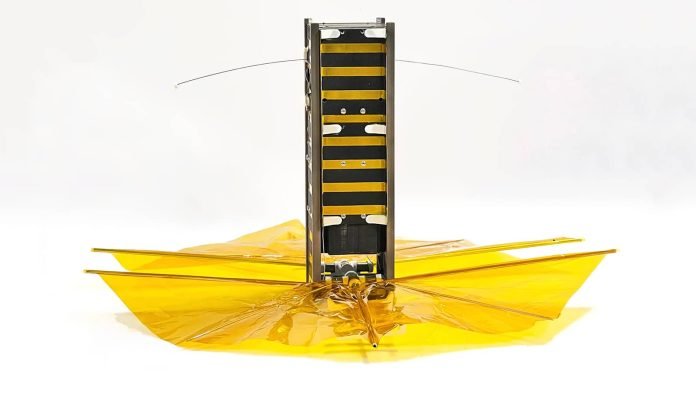
What if you could build a machine that helps clean up space on a budget?
A team of students from Brown University did just that.
Their small satellite, named SBUDNIC, was shot into space to show how we could cheaply get rid of space debris, or “space junk,” and it did its job brilliantly.
In simple terms, space is getting cluttered. Dead satellites and other debris are floating around Earth, and they could crash into active satellites or even the International Space Station.
This could set off a dangerous chain reaction, destroying many satellites in one go.
To tackle this, a group of Brown University students led by Marco Cross and faculty member Rick Fleeter built SBUDNIC for only $10,000.
They used basic materials you can find at any hardware store, even 48 Energizer AA batteries! Their goal was to demonstrate a cost-effective way to remove space junk.
What’s unique about SBUDNIC?
It has a special plastic sail made from a material called Kapton polyimide. Once in space, this sail opened up like an umbrella. The sail helped to push the satellite back towards Earth, where it burned up safely upon re-entering the atmosphere. This happened much quicker than anyone expected—445 days to be exact.
“We wanted to show there’s a cheap way to deorbit space junk,” said Selia Jindal, one of the project leads. The satellite did its job, proving that we can address the space junk problem without spending a fortune.
Dheraj Ganjikunta, the lead program manager of SBUDNIC, added that other expensive concepts like space tow trucks or nets are not as budget-friendly as their $30 drag device.
Why is this such a big deal? According to NASA, there are more than 27,000 pieces of space junk floating around Earth. If nothing is done, we may face a situation where satellites could explode and cause a lot of damage.
The Federal Communications Commission (FCC) even made a new rule in 2022 that satellites must be removed from orbit within five years of finishing their missions.
So how successful was SBUDNIC? Very! It fell back to Earth much quicker than other similar satellites sent up on the same SpaceX mission. While SBUDNIC’s last known location was at 146 kilometers above Earth, the other satellites were still floating at altitudes of 450 kilometers or more.
Besides the drag sail, some experts think solar activity may have helped SBUDNIC return to Earth so quickly. But whatever the reason, SBUDNIC was an overwhelming success, showing that dealing with space junk can be affordable and effective.
The students who built SBUDNIC come from different academic backgrounds, including engineering, economics, international relations, and even sculpture.
According to Fleeter, who taught the Design of Space Systems course where the project began, this unique project is why students come to Brown University in the first place.
So, thanks to these young minds, we have proof that cleaning up space doesn’t have to break the bank. It’s an important lesson as we try to keep Earth’s orbit as clutter-free as possible for future generations.
Follow us on Twitter for more articles about this topic.
Source: Brown University.



